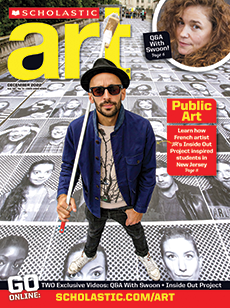Silk-screening is a printing method used by artists and professional printers. The process is closely related to ordinary stenciling.
Artists' fine-art prints made by the silk-screen process are called serigraphs. Serigraphs are made by forcing ink through a tightly stretched silk screen. Parts of the screen—the areas that will not be printed—are coated with a sealer, such as shellac, to prevent ink from passing through. The screen therefore acts as a stencil. In making serigraphs of many colors, printers need a stencil for each color.
No one knows how old the stencil is. The idea is so simple that historians believe stencils may have been used thousands of years ago. The silk-screen stencil is believed to have been invented in Asia as long ago as A.D. 500. By the 1600's, silk-screen printing was a highly developed art in China and Japan. It spread gradually to Europe. Samuel Simon, of England, received the first patent for silk-screen stencil printing in 1907.
